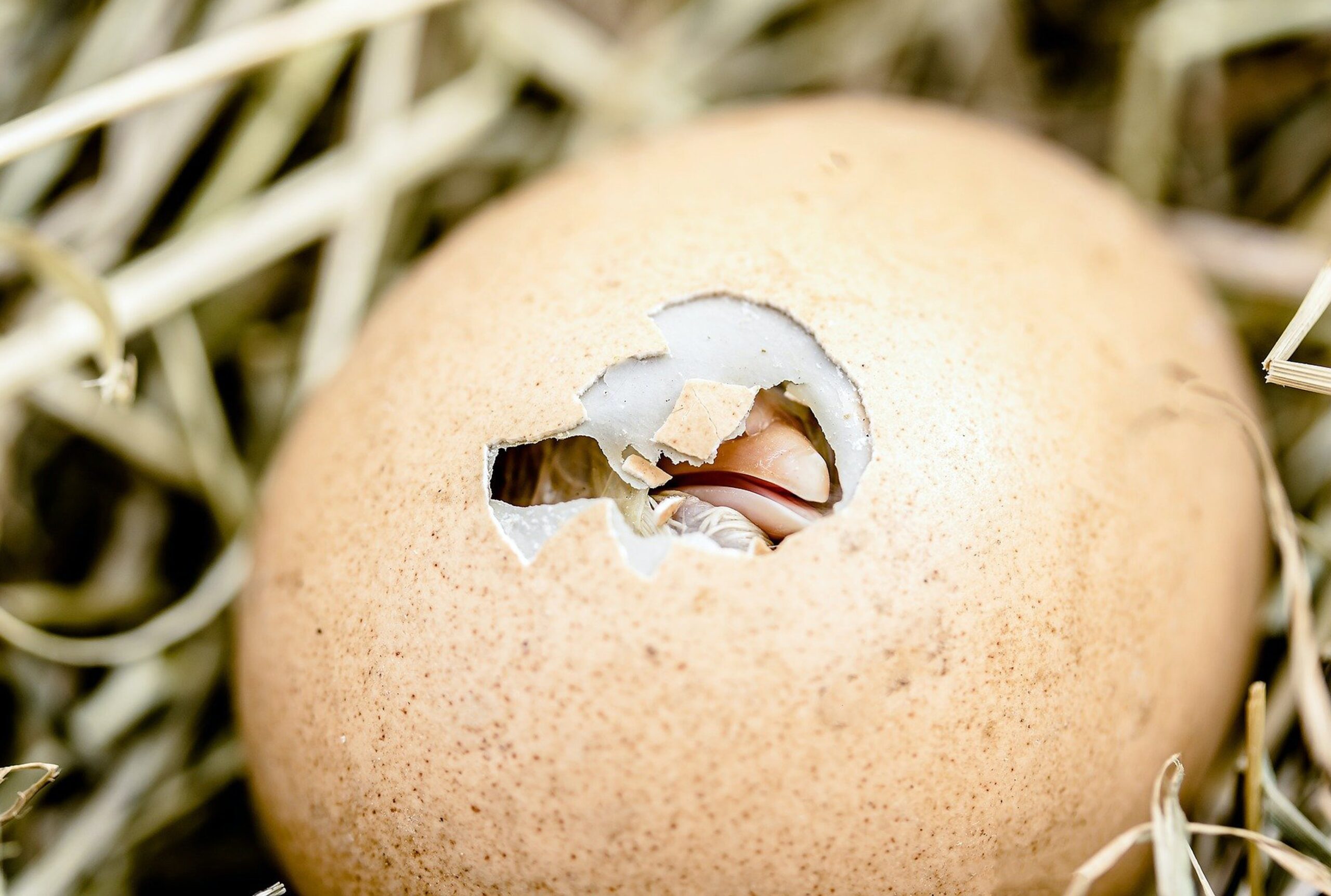As we’re still in nesting season in Southern California, it’s the perfect time to discuss the wonders of the bird egg cycle. And with Mother’s Day just around the corner, it’s a fitting way to pay tribute to all the mothers out there, both bird and human. From egg laying to incubation to hatching, the bird egg cycle is a fascinating display of both nature’s tenderness and tenacity. Here’s the egg cycle process explained, from start to finish:
Bird Egg Cycle Phase #1: Laying
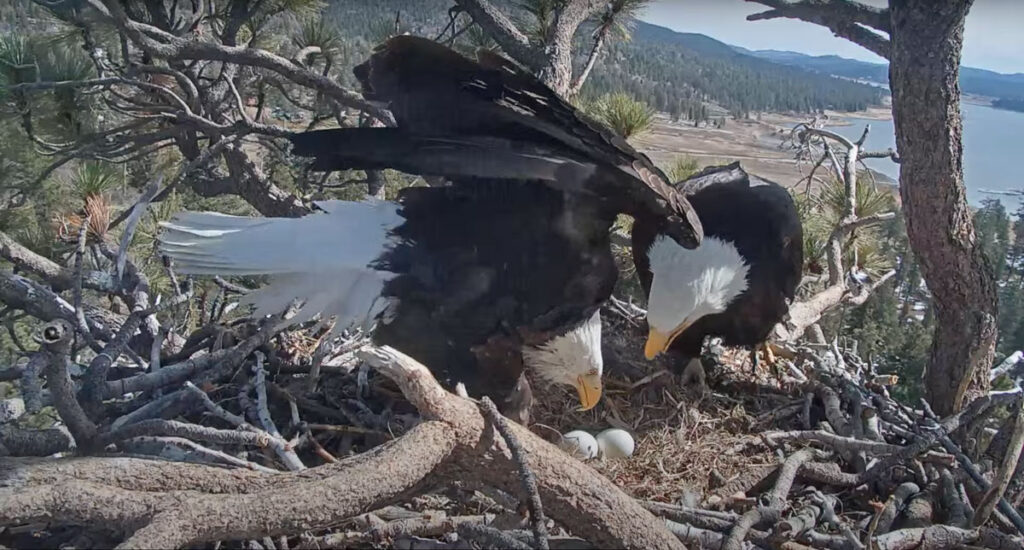
Most bird species lay an egg one or two days after fertilization. However, for some bird species, it can take longer than that to lay eggs after copulation. For example, for Bald Eagles, like our own Jackie and Shadow, it may take 5-10 days. Lovebirds can lay eggs anywhere from 5 to 12 days afterward. And still other species can take weeks or even months to lay an egg.
Birds typically lay more than one egg, and a group of eggs in a single nesting period is called a clutch. Clutch sizes vary between bird species, and even between individuals in the same species. Sometimes a clutch can be as small as two or three eggs, or (like those of the Gray Partridge) as large as 20 or more. Some birds nest and lay eggs only once a year, while others (like bluebirds, robins, and thrushes) nest two, three, four, and even more times.
Egg size, color, and appearance
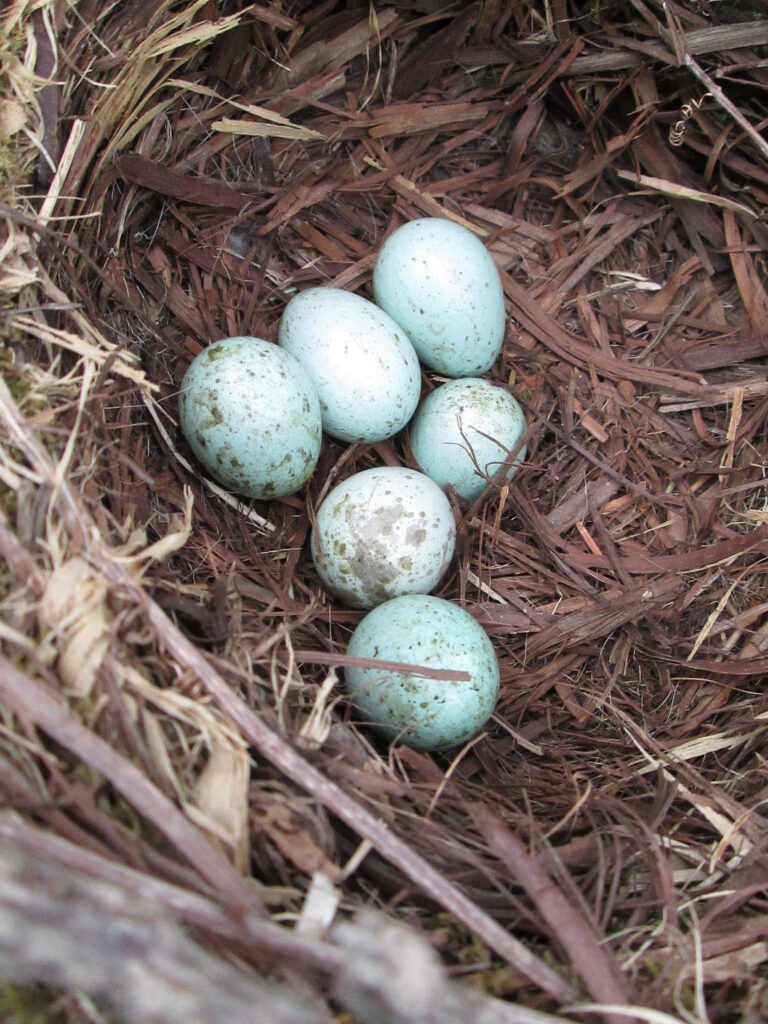
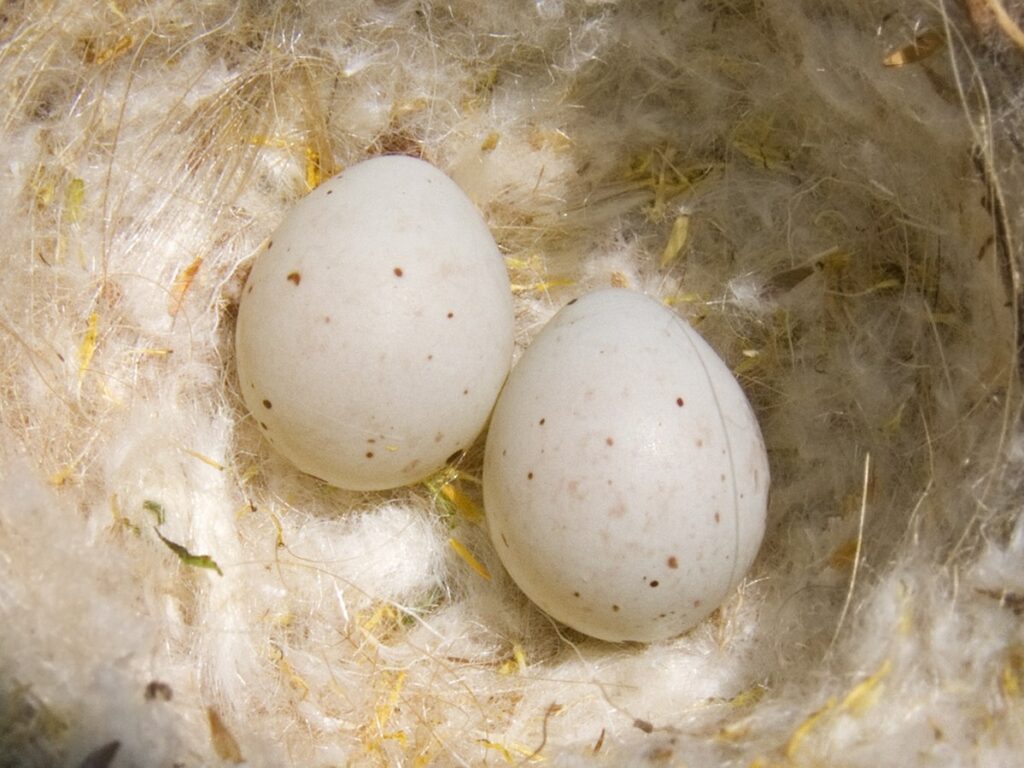

Left to right: crow eggs, goldfinch eggs, and robin eggs.
Much like the characteristics of different bird species, their eggs can vary greatly in color, shape, and size. Here’s a list of bird species and their egg characteristics:
| Bird species | Egg size | Egg color | Egg markings |
| Bald Eagle | L: 2.3-3.3 in. W: 1.9-2.5 in. | Dull white/tan | Light brown blotches |
| Blue Jay | L: 1.0-1.3 in. W: 0.7-0.9 in. | Blue/pink | Brown spots |
| Blue Tit | L: 0.6 in. W: 0.5 in. | Cream | Brown spots |
| Crow | L: 1.4-1.9 in. W: 1.0-1.2 in. | Bluish/olive green | Brown and gray blotches |
| Goldfinch | L: 0.6-0.7 in. W: 0.5 in. | White/cream | Reddish-brown spots |
| House Finch | L: 0.6-0.8 in. W: 0.5-0.6 in. | Blue/white | Black or lavender spots |
| House Sparrow | L: 0.8-0.9 in. W: 0.6 in. | White | Black or gray spots |
| Jackdaw | L: 1.4 in. W: 1.0 in. | White/pale blue | Gray or brown spots |
| Mourning Dove | L: 1.0-1.2 in. W: 0.8-0.9 in. | White | Smooth |
| Robin | L: 1.1-1.2 in. W: 0.8 in. | Blue | Light brown spots |
Bird Egg Cycle Phase #2: Incubating
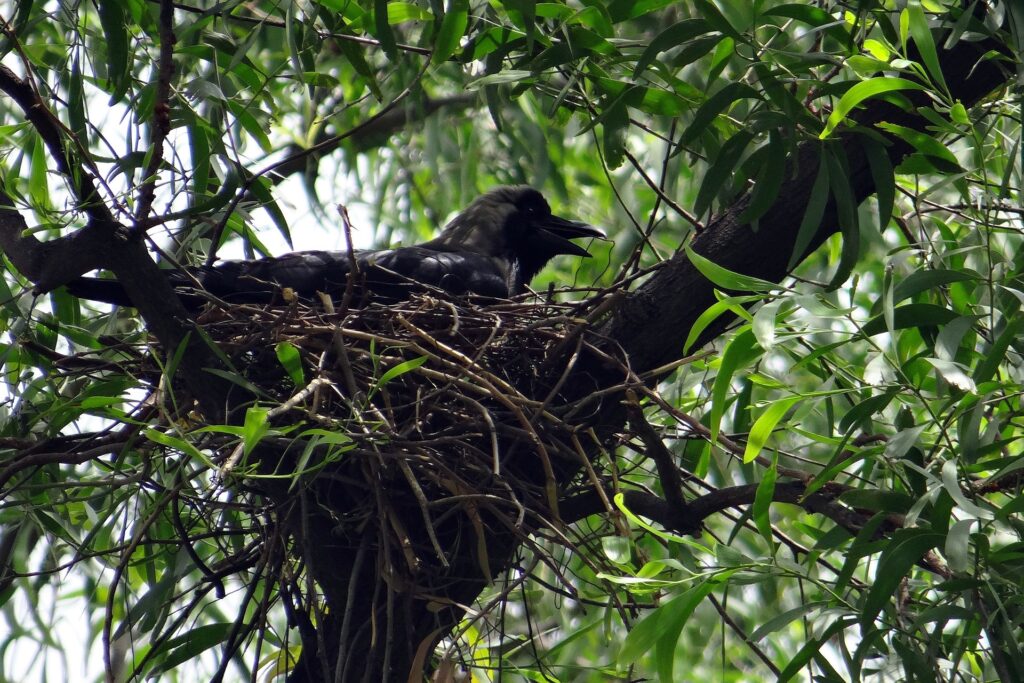
Birds must keep their eggs warm for a certain period of time to aid in the healthy development of the baby bird. They do this by sitting on their eggs, using their body heat to keep the eggs at a warm, regulated temperature (between 85-104° F). This period of time, called the incubation period, varies in length from species to species. In general, however, the larger the bird, the longer the incubation period. For instance, a songbird’s incubation period is 12-15 days, while for most duck species, it’s double that, or even longer. Crows incubate their eggs for about 18 days, robins for 13, and Bald Eagles for about 40. The Laysan Albatross has one of the longest incubation periods at 66 days, while the Megapode (found mainly in the Western Pacific Islands) has the longest incubation period on record: 90 days!
Some bird species start incubating after the first egg of the clutch has been laid, while others wait until the second or third egg. And songbirds wait until they’ve laid all of their eggs before beginning incubation. One or both bird parents will play a role in the incubation process. When it’s both parents, it’s not uncommon for them to take “shifts.” For example, the Northern Flicker father will often take the night shift and part of the next day, after which the mother will take over. Woodpeckers, starlings, pigeons, and doves have similar shared incubation behaviors, while with other species (like hummingbirds and certain raptors), the mother is the sole incubator. Though in latter cases, the father often helps out by feeding the mother and protecting the nest from predators.
Bird Egg Cycle Phase #3: Hatching

Typically, when an egg is ready to hatch, you’ll see a tiny hole appear on its surface. This is created by the hatchling’s beak as they work to break out of the shell in a process called “pipping.” The hatchling, sometimes with the help of its parents, will continue to chip away at this hole until it emerges—a process that may take hours. The newly hatched baby bird is usually bald or has only a few soft feathers. Once the egg home has been abandoned, the mother bird will often clear it out of the nest to make more room for their new offspring.
There are two types of birds: altricial and precocial. Altricial hatchlings—like songbirds, woodpeckers, and hummingbirds—are dependent on their parents for food, warmth, and shelter after they’ve hatched. They’re born bald (or with small patches of feathers) and with their eyes closed. Altricial birds typically stay longer in the nest, taking much longer to fledge, than precocial birds. An example of this is the Bald Eagle hatchling, which stays in the nest for three months or longer!
Precocial hatchlings—like ducks, shorebirds, and owls—can walk and even swim shortly after they’re hatched. They can also find their own food, mostly with a little help from their parents. These hatchlings are born with open eyes and a full down cover. They typically fledge the nest, along with their parents, within the first day or two of hatching, though for others it can take a bit longer. Songbird hatchlings are precocial, and may leave the nest in as little as 8 days or up to three weeks after hatching.
Learn More with Chirp
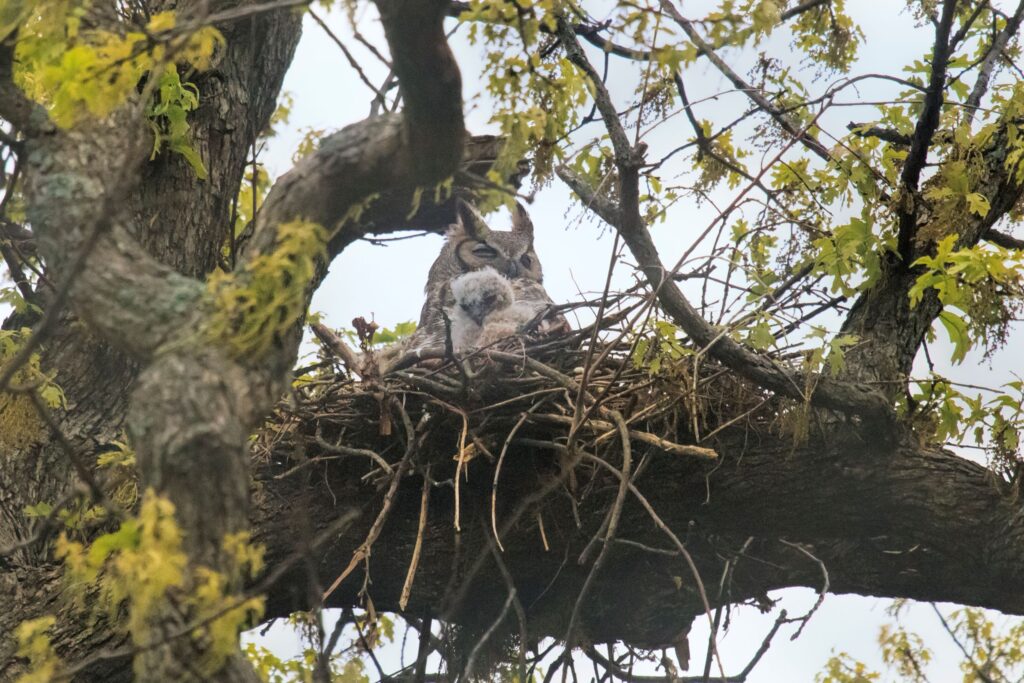
Have you ever wondered if birds have feelings? Or which birds are attracted to which colors? Maybe you ask how weather affects birds, or where birds sleep at night. The Chirp Nature Center has tons of free wild bird resources to quench your curiosity, from our blog to our YouTube channel to our Bird Talks featuring special guest speakers. There’s so much to learn about wild birds at Chirp!

